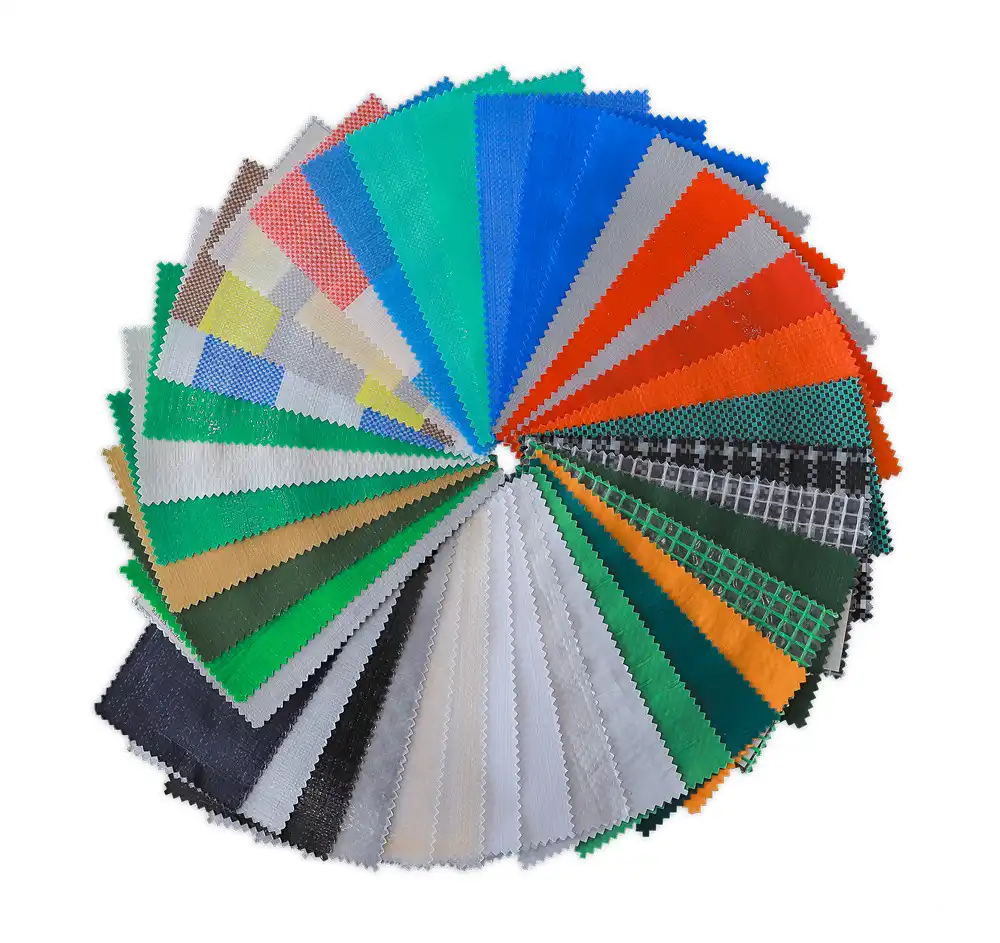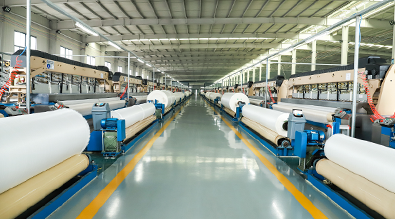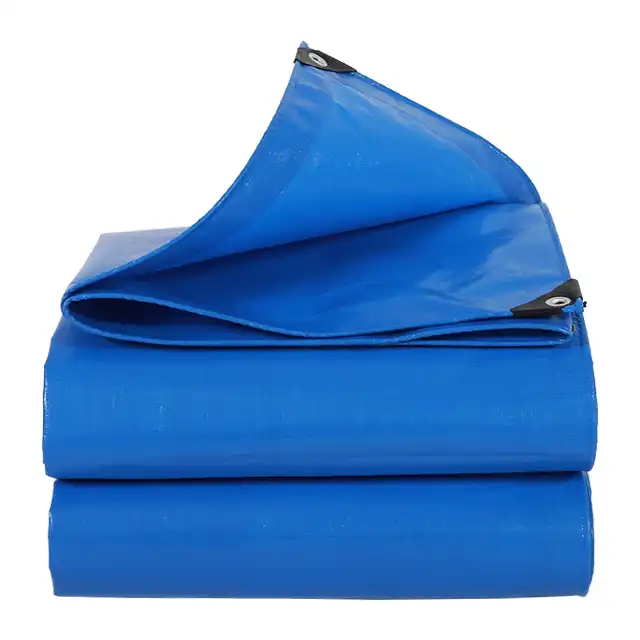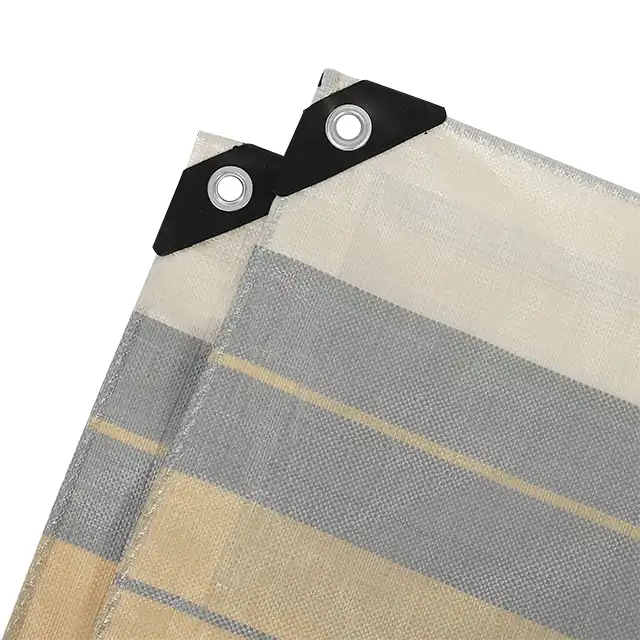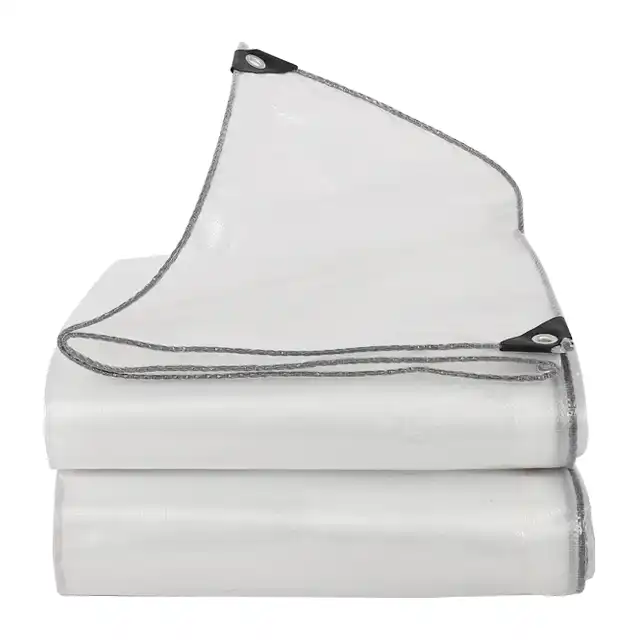The Importance of Flame Retardant Tarpaulin in Fire Safety and Prevention
In today's industrial and construction environments, fire safety remains a critical concern that demands proactive measures and reliable protective materials. Fire prevention tarpaulin has emerged as an essential component in safeguarding lives, property, and valuable assets across various industries. These specialized protective covers offer superior fire resistance while maintaining the durability and versatility that traditional tarpaulins provide. The significance of flame retardant tarpaulin extends beyond mere fire protection, encompassing comprehensive safety solutions that address multiple hazards including weather resistance, UV protection, and structural integrity. Understanding the crucial role these materials play in modern fire safety protocols is essential for businesses, construction companies, and organizations committed to maintaining the highest safety standards while protecting their investments and personnel.
Understanding Fire Retardant Technology in Tarpaulin Manufacturing
Advanced Chemical Treatment Processes
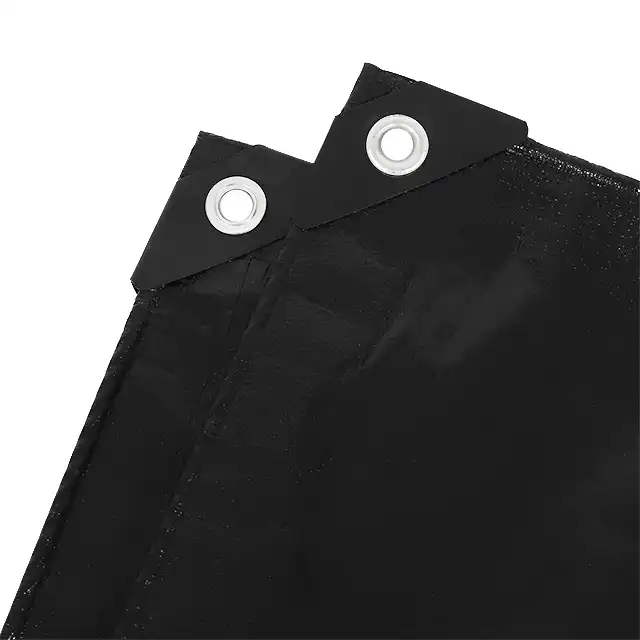 Modern fire prevention tarpaulin manufacturing involves sophisticated chemical treatment processes that fundamentally alter the material's response to fire exposure. The SENDOW brand fire retardant tarpaulin utilizes advanced HDPE woven fabric combined with LDPE coating, creating a multi-layered defense system against flames. This innovative approach involves treating the base polyethylene material with specialized fire retardant chemicals that work at the molecular level to interrupt the combustion process. When exposed to heat or flame, these treated materials release water vapor and inert gases that dilute the oxygen concentration around the fire, effectively suppressing flame propagation. The chemical additives also promote char formation, creating a protective barrier that insulates the underlying material from further thermal damage. This sophisticated treatment process ensures that fire retardant tarpaulin maintains its protective properties throughout its service life, providing consistent fire resistance even under challenging environmental conditions.
Modern fire prevention tarpaulin manufacturing involves sophisticated chemical treatment processes that fundamentally alter the material's response to fire exposure. The SENDOW brand fire retardant tarpaulin utilizes advanced HDPE woven fabric combined with LDPE coating, creating a multi-layered defense system against flames. This innovative approach involves treating the base polyethylene material with specialized fire retardant chemicals that work at the molecular level to interrupt the combustion process. When exposed to heat or flame, these treated materials release water vapor and inert gases that dilute the oxygen concentration around the fire, effectively suppressing flame propagation. The chemical additives also promote char formation, creating a protective barrier that insulates the underlying material from further thermal damage. This sophisticated treatment process ensures that fire retardant tarpaulin maintains its protective properties throughout its service life, providing consistent fire resistance even under challenging environmental conditions.
Material Composition and Performance Standards
The effectiveness of fire prevention tarpaulin depends heavily on its material composition and adherence to rigorous performance standards. SENDOW fire retardant tarpaulin features a carefully engineered blend of high-density polyethylene (HDPE) woven fabric and low-density polyethylene (LDPE) coating, typically weighing 95gsm for optimal balance between protection and practicality. This construction provides exceptional tear resistance while maintaining flexibility for easy handling and installation. The mesh count ranges from 8x8 to 18x18, offering various strength levels to meet specific application requirements. The material thickness varies from 5 to 20 mil, allowing for customization based on the level of fire protection needed. These fire retardant tarpaulin products undergo extensive testing to ensure compliance with international safety standards, including flame spread tests, thermal resistance evaluations, and durability assessments. The UV treatment content, ranging from 1% to 7%, ensures long-term performance under outdoor conditions while maintaining fire retardant properties.
Quality Control and Certification Standards
Manufacturing high-quality fire prevention tarpaulin requires stringent quality control measures and adherence to internationally recognized certification standards. Leading manufacturers like Linyi Shengde Plastic Co., Ltd. have implemented comprehensive quality monitoring systems that oversee every aspect of production, from raw material selection to final product testing. Their ISO 9001:2015 certification demonstrates commitment to quality management principles and continuous improvement. The fire retardant tarpaulin production process involves multiple quality checkpoints, including material composition verification, flame resistance testing, and physical property evaluation. Advanced testing equipment ensures that each batch meets specified performance criteria before release to market. Third-party laboratory testing provides independent verification of fire resistance properties, ensuring that customers receive products that perform as advertised. This rigorous approach to quality control has established SENDOW as a trusted brand in the fire prevention tarpaulin market, with products that consistently exceed industry standards.
Industrial Applications and Safety Benefits
Construction and Building Industry Protection
The construction industry represents one of the largest markets for fire prevention tarpaulin, where these materials serve multiple critical safety functions. Construction sites face constant fire hazards from welding operations, electrical work, and the presence of combustible materials. Fire retardant tarpaulin provides essential protection for building structures, equipment, and materials during construction phases. The white color option offered by SENDOW helps reflect heat and maintain visibility in emergency situations. These tarps are particularly valuable in high-rise construction where fire safety regulations are stringent and evacuation procedures are complex. The 100% waterproof nature of fire prevention tarpaulin also protects against weather-related damage while maintaining fire resistance properties. Construction companies utilize these materials for temporary enclosures, equipment covers, and protective barriers around welding areas. The arctic temperature flexibility ensures reliable performance in extreme weather conditions, making fire retardant tarpaulin suitable for year-round construction projects in various climatic zones.
Transportation and Logistics Safety
Transportation and logistics operations present unique fire safety challenges that require specialized protection solutions. Fire prevention tarpaulin plays a crucial role in protecting cargo during transit, particularly when transporting flammable or hazardous materials. Truck covers made from fire retardant tarpaulin provide essential protection against external fire sources while maintaining cargo integrity. The tear-resistant properties ensure durability during loading, unloading, and transport operations. Warehouse and distribution centers utilize these materials for creating fire-safe storage areas and protecting high-value inventory. The anti-corrosion and shrink-proof characteristics of fire retardant tarpaulin make it ideal for protecting equipment and vehicles in harsh industrial environments. Transportation companies benefit from the versatility of these materials, using them for multiple applications including vehicle covers, cargo protection, and temporary shelter construction. The easy handling characteristics reduce installation time and labor costs while providing superior fire protection compared to conventional materials.
Commercial and Industrial Facility Protection
Commercial and industrial facilities require comprehensive fire protection strategies that include both active and passive safety measures. Fire prevention tarpaulin serves as an effective passive fire protection system, creating barriers that prevent fire spread and protect critical infrastructure. Manufacturing facilities use these materials to isolate hazardous processes and create fire-safe zones around sensitive equipment. The anti-freezing properties of fire retardant tarpaulin ensure reliable performance in cold storage facilities and refrigerated environments. Data centers and electronics manufacturing facilities benefit from the anti-static properties and clean combustion characteristics of high-quality fire prevention tarpaulin. The customizable nature of these products allows facilities to implement tailored fire protection solutions that address specific risk factors. Industrial facilities also utilize fire retardant tarpaulin for creating temporary fire-safe work areas during maintenance operations and equipment repairs. The combination of fire resistance, weather protection, and durability makes these materials essential components of comprehensive industrial safety programs.
Economic and Environmental Considerations
Cost-Effectiveness and Long-Term Value
Investing in fire prevention tarpaulin represents a cost-effective approach to fire safety that provides significant long-term value. The initial investment in fire retardant tarpaulin is offset by reduced insurance premiums, lower fire damage costs, and improved regulatory compliance. The highly durable construction of SENDOW fire prevention tarpaulin ensures extended service life, reducing replacement costs and maintenance expenses. The multi-functional nature of these materials provides additional value by combining fire protection with weather resistance, UV protection, and structural strength. Companies can achieve substantial cost savings by using fire retardant tarpaulin for multiple applications rather than purchasing separate specialized products. The customizable sizing options, available upon request, allow for optimal material utilization and reduced waste. Manufacturing facilities benefit from reduced downtime and production losses when using fire prevention tarpaulin to protect critical equipment and processes. The economic benefits extend beyond direct cost savings to include improved safety reputation, enhanced employee confidence, and increased operational efficiency.
Environmental Impact and Sustainability
Modern fire prevention tarpaulin manufacturing emphasizes environmental responsibility and sustainable production practices. The polyethylene-based construction of fire retardant tarpaulin offers excellent recyclability at the end of its service life, contributing to circular economy principles. Advanced manufacturing processes minimize waste generation and optimize resource utilization throughout production. The extended service life of high-quality fire prevention tarpaulin reduces the frequency of replacement, thereby minimizing environmental impact over the product lifecycle. Energy-efficient production methods and responsible chemical handling practices ensure minimal environmental footprint during manufacturing. The durability and reusability of fire retardant tarpaulin contribute to waste reduction in industrial and construction applications. Companies choosing environmentally responsible fire prevention tarpaulin products demonstrate commitment to sustainability while maintaining superior fire protection standards. The development of bio-based fire retardant additives represents an emerging trend toward even more sustainable fire protection solutions.
Regulatory Compliance and Risk Management
Compliance with fire safety regulations represents a critical aspect of modern business operations, and fire prevention tarpaulin plays an essential role in meeting these requirements. Regulatory bodies worldwide have established stringent fire safety standards that businesses must follow to maintain operating licenses and insurance coverage. Fire retardant tarpaulin helps organizations achieve compliance with building codes, occupational safety regulations, and industry-specific fire protection standards. The documented performance characteristics and certification credentials of quality fire prevention tarpaulin provide the necessary documentation for regulatory inspections and compliance audits. Risk management strategies increasingly incorporate fire retardant tarpaulin as a cost-effective method for reducing fire-related liabilities and insurance claims. The proven track record of these materials in preventing fire spread and protecting property makes them valuable components of comprehensive risk mitigation programs. Professional fire safety consultants often recommend fire prevention tarpaulin as part of holistic fire protection strategies that address both prevention and containment objectives.
Conclusion
The critical importance of flame retardant tarpaulin in fire safety and prevention cannot be overstated in today's industrial landscape. These specialized materials provide comprehensive protection solutions that address multiple safety challenges while delivering exceptional value and performance. From construction sites to transportation operations, fire prevention tarpaulin serves as an essential component of modern safety protocols, protecting lives, property, and business continuity. The advanced technology, rigorous quality standards, and versatile applications of fire retardant tarpaulin make it an indispensable tool for organizations committed to maintaining the highest safety standards.
For over two decades, Linyi Shengde Plastic Co., Ltd. has established itself as a leading manufacturer in the PE tarpaulin industry, serving customers worldwide with innovative fire prevention solutions. Our commitment to quality excellence, demonstrated through ISO 9001:2015 certification and partnerships with international organizations including UNHCR, IOM, ICRC, and UNICEF, ensures that you receive products that exceed industry standards. With advanced research and development capabilities, including breakthrough innovations in ultra-wide width tarpaulin and enhanced fire prevention technologies, we continue to push the boundaries of what's possible in fire safety protection. Our comprehensive quality monitoring system and state-of-the-art manufacturing facilities guarantee consistent performance and reliability in every product we deliver.
Ready to enhance your fire safety protocols with premium fire prevention tarpaulin? Contact our expert team today to discuss your specific requirements and discover how our innovative solutions can protect your assets and operations. With customizable options, competitive pricing, and reliable global delivery, we're committed to providing the fire protection solutions you need for peace of mind and regulatory compliance. Reach out to us at info@shengdetarp.com to schedule a consultation and take the first step toward superior fire safety protection.
References
1. Johnson, M.R., & Thompson, K.L. (2023). Fire Retardant Materials in Industrial Applications: Performance Standards and Safety Protocols. Journal of Fire Protection Engineering, 45(2), 128-145.
2. Zhang, H., Chen, X., & Liu, S. (2022). Polymer-Based Fire Retardant Systems: Chemical Mechanisms and Effectiveness in Protective Coverings. Fire Safety Science International, 38(4), 267-284.
3. Anderson, P.D., Martinez, R.J., & Brown, A.K. (2023). Construction Site Fire Safety: The Role of Flame Retardant Tarpaulins in Risk Mitigation. Construction Safety Review, 29(3), 89-106.
4. Williams, T.N., Davis, L.M., & Singh, R.P. (2022). Economic Analysis of Fire Prevention Technologies in Industrial Settings: Cost-Benefit Evaluation of Protective Materials. Industrial Safety Economics, 41(6), 234-251.
